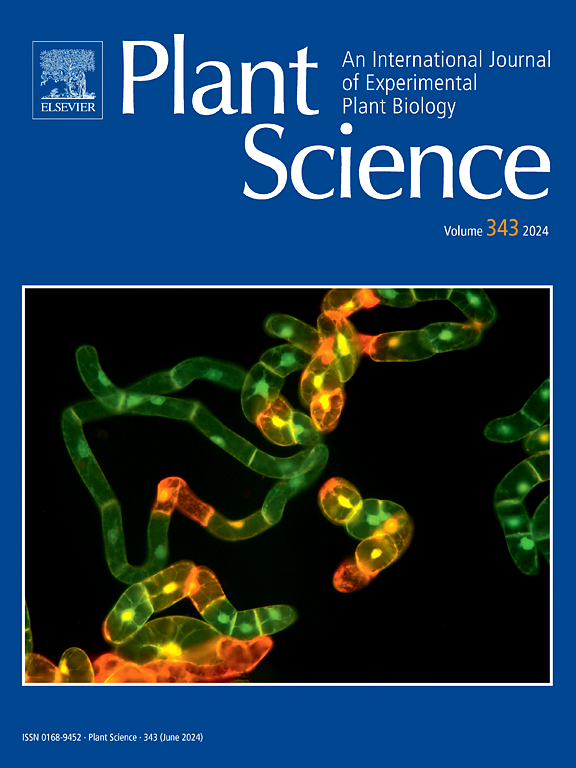Simple and semi-high throughput determination of total phenolic, anthocyanin, flavonoid content, and total antioxidant capacity of model and crop plants for cell physiological phenotyping
IF 4.2
2区 生物学
Q2 BIOCHEMISTRY & MOLECULAR BIOLOGY
引用次数: 0
Abstract
Plants biosynthesize a wide range of antioxidants capable of attenuating ROS-induced oxidative damage. There exist several in vitro methods to analyze antioxidants and total antioxidant capacity from different tissues and of various plant species. We have established a single, fast and cost-efficient extraction protocol combined with a semihigh throughput 96-well plate assay methods for determination of the level of the key antioxidants phenolics, anthocyanins and flavonoids in combination with the determination of total antioxidant capacity using ferric reducing antioxidant power (FRAP) and trolox equivalent antioxidant capacity (TEAC). The method was optimized and verified with samples from different strawberry species and cultivars with known differences in the parameters measured. This method proved to be suitable for analyses of eight model and crop plants, and distinct antioxidant signatures were determined for the different tissues and organs analyzed, including leaf, root, fruit, spike, and tuber samples. The method was robust and was shown in two case studies to be a resource-efficient and fast experimental platform also to assess biotic and abiotic stress responses, notably including fungal infection and the impact of a progressive drought regime. Since method was adapted for a semi-high throughput 96-well assay format it is well-suited for integration of cell physiological phenotyping into a holistic phenomics approach for germplasm assessment and plant breeding screening. This analytical platform uses microplate spectrophotometer which proved to be suitable to determine the antioxidant contents and total antioxidant capacity signatures of various plant species and tissues with similar findings as reported in literature.
简单、半高通量测定模型和作物植物的总酚、花青素、类黄酮含量和总抗氧化能力,用于细胞生理表型分析
植物生物合成多种抗氧化剂,能够减轻ros诱导的氧化损伤。有几种体外方法可以分析不同组织和不同植物的抗氧化剂和总抗氧化能力。我们建立了一种单一、快速和经济高效的提取方案,结合半高通量96孔板分析方法,用于测定关键抗氧化剂酚类、花青素和类黄酮的水平,并结合使用铁还原抗氧化能力(FRAP)和trolox等效抗氧化能力(TEAC)测定总抗氧化能力。对该方法进行了优化,并以不同草莓品种和栽培品种的样品进行了验证。该方法被证明适用于8种模型和作物植物的分析,并在分析的不同组织和器官中确定了不同的抗氧化特征,包括叶、根、果、穗和块茎样品。该方法是可靠的,并在两个案例研究中被证明是一个资源高效和快速的实验平台,也可用于评估生物和非生物胁迫反应,特别是包括真菌感染和渐进干旱制度的影响。由于该方法适用于半高通量96孔分析格式,因此非常适合将细胞生理表型整合到种质评估和植物育种筛选的整体表型学方法中。该分析平台采用微孔板分光光度计,适用于测定各种植物和组织的抗氧化剂含量和总抗氧化能力特征,与文献报道的结果相似。
本文章由计算机程序翻译,如有差异,请以英文原文为准。
求助全文
约1分钟内获得全文
求助全文
来源期刊

Plant Science
生物-生化与分子生物学
CiteScore
9.10
自引率
1.90%
发文量
322
审稿时长
33 days
期刊介绍:
Plant Science will publish in the minimum of time, research manuscripts as well as commissioned reviews and commentaries recommended by its referees in all areas of experimental plant biology with emphasis in the broad areas of genomics, proteomics, biochemistry (including enzymology), physiology, cell biology, development, genetics, functional plant breeding, systems biology and the interaction of plants with the environment.
Manuscripts for full consideration should be written concisely and essentially as a final report. The main criterion for publication is that the manuscript must contain original and significant insights that lead to a better understanding of fundamental plant biology. Papers centering on plant cell culture should be of interest to a wide audience and methods employed result in a substantial improvement over existing established techniques and approaches. Methods papers are welcome only when the technique(s) described is novel or provides a major advancement of established protocols.
 求助内容:
求助内容: 应助结果提醒方式:
应助结果提醒方式:


